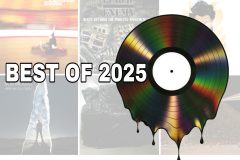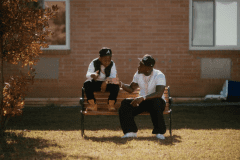BLUE LAGOON (Blue Orange)
For a long time your tribe has been content to live off of the beautiful land of your native island. Palm trees, good fishing, perfect weather, there are few things left to want in life. However, as the new chief you’ve heard talk of an unexplored archipelago just past the horizon, rich in resources and opportunity. The call of adventure is too strong to deny! It’s time to go discover the land of the Blue Lagoon!
Played in two phases, phase one of Blue Lagoon is the Exploration Phase and finds players leaving their boats to venture out and discover this new archipelago. After setting up the board with randomized Resource and Totem tokens, the game is played by players take turns placing either a Settler token or Village (more on Villages in the next phase). For the Exploration Phase, Settler tokens must always start from a water space (their boats), but on the following turns Settlers and Villages can extend to adjoining land spaces. After all resources have been claimed or when all players have placed all of their Settler tokens and Villages, the Exploration Phase is over and the players score.
There are many ways to score in Blue Lagoon. Players score points for having pieces on 7 or 8 of the 8 islands, points for their chain of pieces that connects the most islands, points for having the majority of pieces on an island, and finally points for Resource and Totem tokens. After adding up points from the Exploration Phase, Settler tokens (not Villages) are removed from the board and Resource and Totem tokens are placed again – omitting any starting spot that now has a Village on it.
Phase two of Blue Lagoon is the Settlement Phase and is played exactly like the Exploration Phase except that instead of venturing out from their boats, players now are starting from their Villages. In this way, the Exploration Phase is about more than just scoring points but also about placing Villages to gain an advantage in the following Settlement Phase. After all Resources have been claimed or all players have placed all of their Settler tokens, the Exploration Phase is over and players score again using the same rules as before. Adding points together from both rounds, the player with the highest score wins!

On first look, Blue Lagoon almost seems to simple for its own good. The rule book is 12-pages long, but that’s just because it’s presented in English, French and Spanish. The four small pages in your respective language are filled with pictures and examples and after you’ve finished reading them there’s a lurking sense that you must have missed something.
However once you start playing the game, the depth of Blue Lagoon is revealed. With so many ways to score points, players have to keep multiple goals in mind while also keeping track of the progress of their opponents. A chain of pieces left unchecked, having just one more piece on an island than an opponent or amassing select resources can all lead to big scores. There’s also the ability to set yourself up for a prosperous Settlement Phase with a well thought out network of Villages placed in your Exploration Phase. Quick to learn and fun to play with beautifully done art and components, there’s a lot of fun to discover with Blue Lagoon! (Blue Orange) by David C. Obenour







Social Media